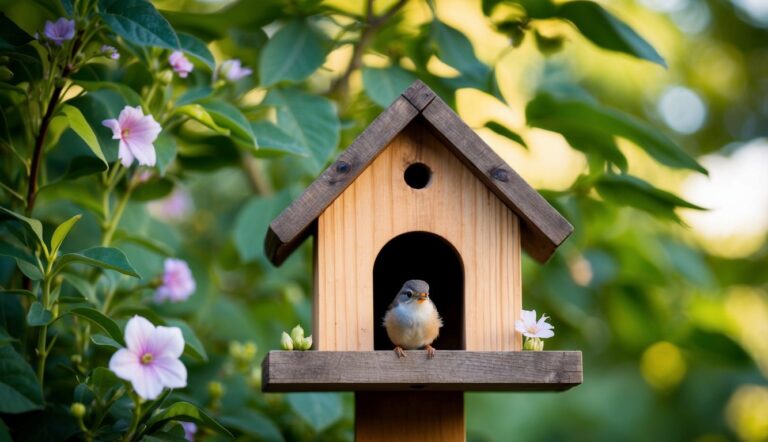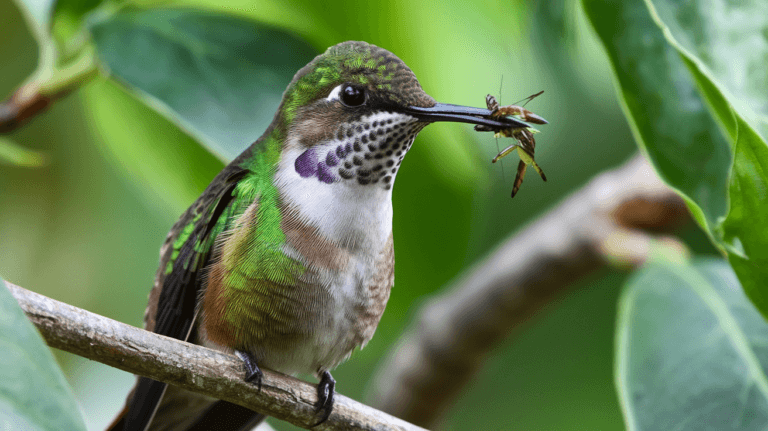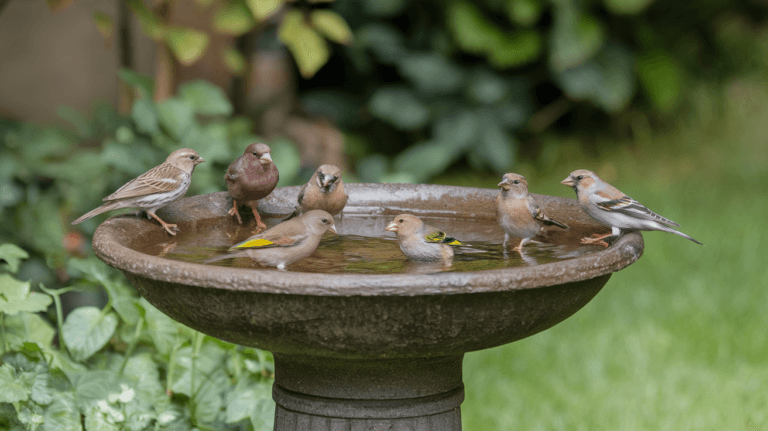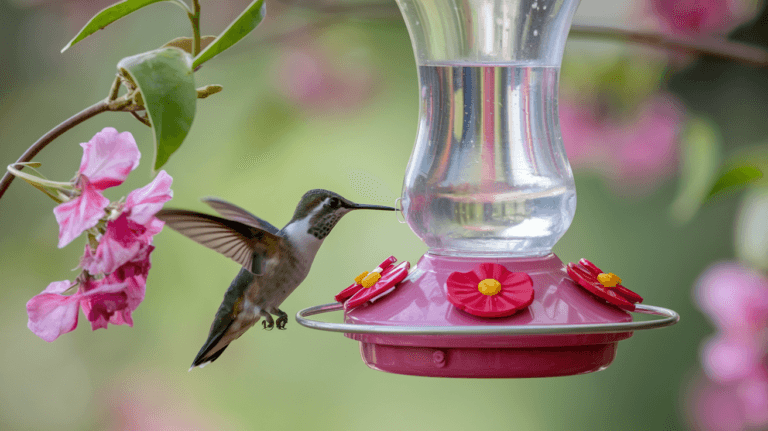How to Attract Birds to a Window Feeder? (6 Expert Tips)
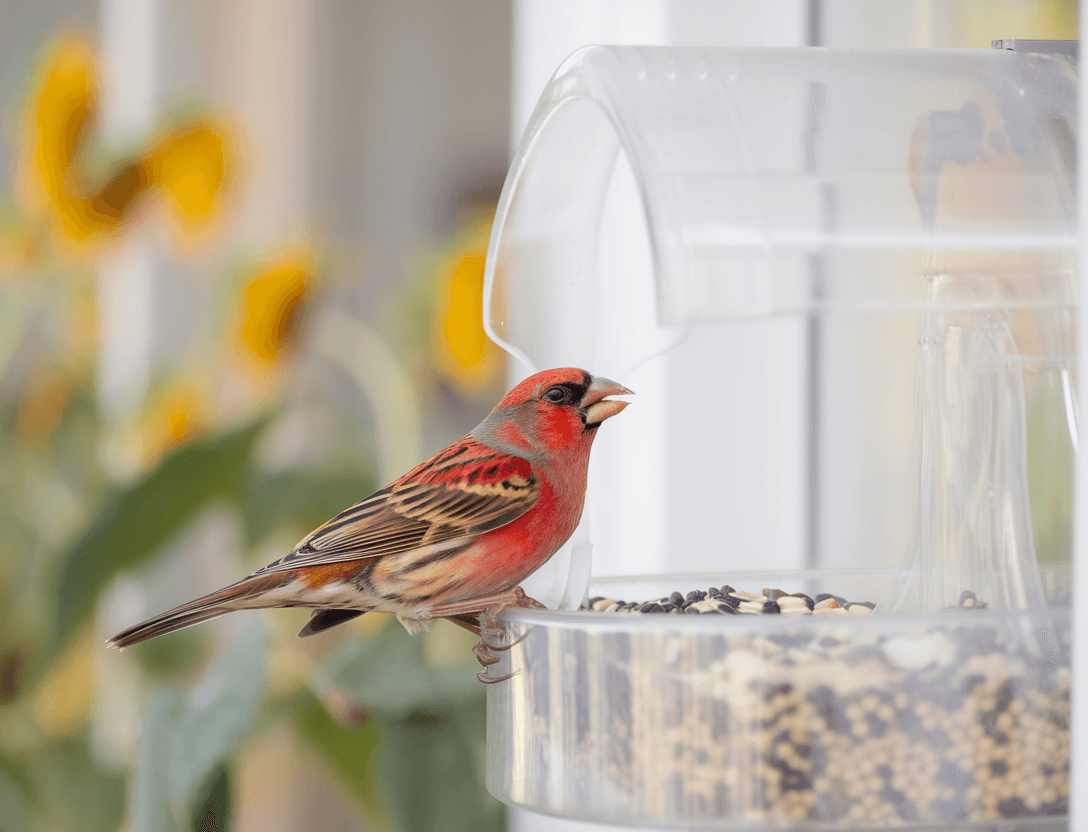
Attracting birds to a window feeder is a rewarding way to enjoy birdwatching from the comfort of your home. By providing the right bird feeder, food, and environment, you can create a welcoming space for wild birds to visit regularly.
In this guide, I will walk you through everything you need to know about setting up a window bird feeder, choosing the best bird food, and creating a bird-friendly environment to attract a variety of species.
Jump to a Section
Why Use a Window Feeder?
A window feeder is a small, transparent bird feeder that attaches directly to your window using suction cups. It allows you to observe birds up close without disturbing them. Here are some benefits of using a window feeder:
- Close-up birdwatching: Enjoy a clear view of birds from indoors.
- Space-saving: Perfect for small spaces like apartments or urban homes.
- Easy maintenance: Convenient to refill and clean.
- Educational: Great for teaching kids about bird species and their behaviors.
How to Attract Birds to a Window Feeder
Attracting birds to your window feeder requires a combination of the right bird feeder, proper placement, and the best bird food. Below, we’ll break down each step to help you create a bird-friendly setup.
1. Choose the Right Window Feeder
The first step is selecting a window bird feeder that suits your needs and the types of birds you want to attract. Here are some factors to consider:
Types of Window Feeders
| Type | Best For | Pros |
|---|---|---|
| Tray Feeders | Small birds like sparrows and finches | Easy to clean, holds a variety of foods |
| Suet Feeders | Woodpeckers and nuthatches | Provides high-energy food for cold weather |
| Seed Tube Feeders | Finches, chickadees, and titmice | Keeps seeds dry, reduces waste |
| Hummingbird Feeders | Hummingbirds | Designed for nectar, attracts colorful birds |
Features to Look For
- Durable materials: Choose feeders made of sturdy plastic or glass.
- Easy to clean: Look for feeders with removable parts for cleaning.
- Secure attachment: Ensure the suction cups are strong and reliable.
2. Select the Best Bird Food
The type of bird food you offer plays a crucial role in attracting specific bird species. Here’s a breakdown of the most popular options:
Popular Bird Foods and Their Attraction
| Food Type | Birds Attracted | Tips |
|---|---|---|
| Black Oil Sunflower Seeds | Cardinals, chickadees, finches | High in fat, loved by most seed-eating birds |
| Nyjer Seeds | Goldfinches, sparrows | Tiny seeds, best for tube feeders |
| Suet | Woodpeckers, nuthatches, wrens | High-energy food, ideal for winter |
| Mealworms | Bluebirds, robins, wrens | Great for insect-eating birds |
| Nectar | Hummingbirds, orioles | Use a 4:1 water-to-sugar ratio for nectar |
Tips for Choosing Bird Food
- Freshness matters: Always use fresh seeds and suet to avoid mold.
- Avoid fillers: Cheap mixes often contain fillers like milo that birds don’t eat.
- Seasonal adjustments: Offer high-fat foods in winter and protein-rich foods in spring.
3. Proper Placement of the Window Feeder
Where you place your window feeder can significantly impact its success. Follow these tips for optimal placement:
Ideal Locations
- Quiet windows: Choose a window with minimal human traffic to avoid scaring birds.
- Natural cover: Place the feeder near trees or shrubs where birds can perch and feel safe.
- Sunlight: Avoid direct sunlight to prevent food from spoiling quickly.
Height Considerations
- Eye level: Position the feeder at a height where you can easily observe the birds.
- Safety: Ensure the feeder is high enough to keep birds safe from predators like cats.
4. Create a Bird-Friendly Environment
Birds are more likely to visit your window feeder if they feel safe and comfortable in your yard. Here’s how to create a welcoming environment:
Provide Water Sources
Birds need water for drinking and bathing. Consider adding a birdbath or small water dish near the feeder.
Add Natural Perches
Place branches or install a small perch near the feeder to give birds a place to rest.
Avoid Pesticides
Chemicals can harm birds and reduce their food sources. Opt for natural pest control methods instead.
Plant Native Flowers
Native plants attract insects and provide natural food sources for birds. Examples include sunflowers, coneflowers, and milkweed.
5. Maintain Your Window Feeder
Regular maintenance is essential to keep birds coming back to your feeder. Follow these steps:
Cleaning Tips
- Frequency: Clean the feeder every 1-2 weeks to prevent mold and bacteria.
- Method: Use warm, soapy water and a brush to scrub the feeder. Rinse thoroughly.
- Drying: Let the feeder dry completely before refilling it.
Refilling Tips
- Consistency: Keep the feeder stocked, especially during winter when food is scarce.
- Portion control: Avoid overfilling to prevent food from spoiling.
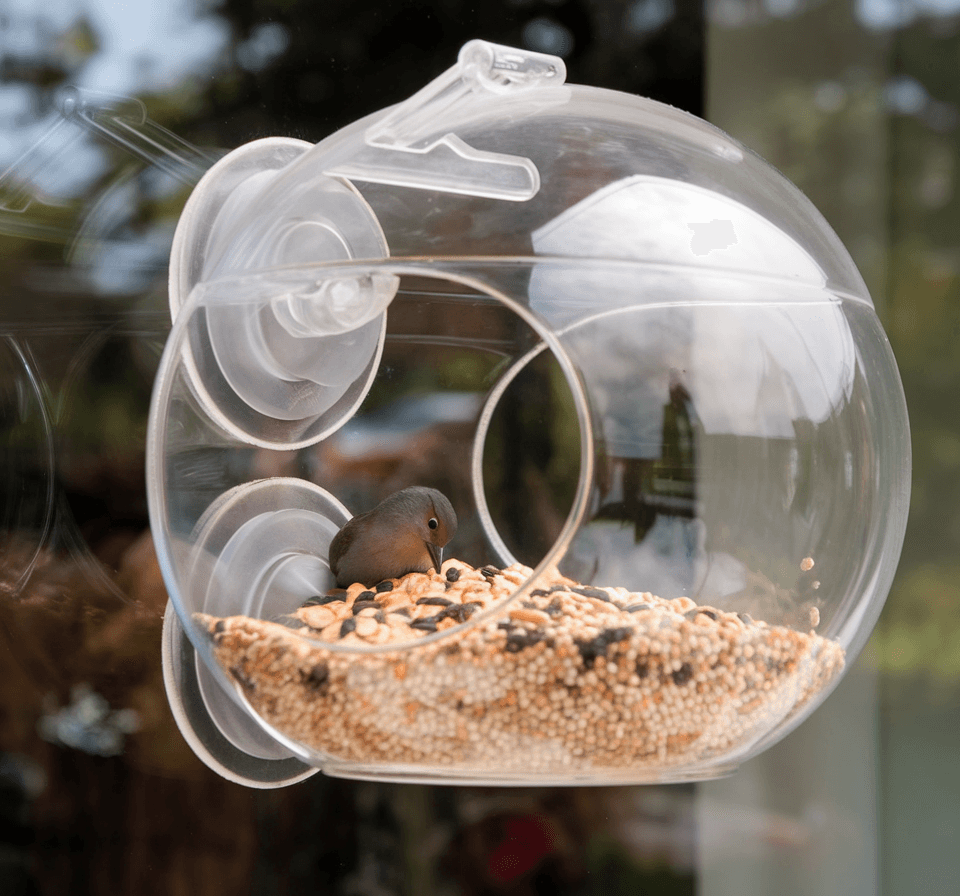
6. Troubleshooting Common Issues
If birds aren’t visiting your window feeder, here are some common problems and solutions:
Birds Avoid the Feeder
- Problem: The feeder is too close to human activity.
- Solution: Move the feeder to a quieter window.
Food Spoils Quickly
- Problem: The feeder is in direct sunlight.
- Solution: Relocate the feeder to a shaded area.
Predators Scare Birds Away
- Problem: Cats or other predators are lurking nearby.
- Solution: Place the feeder higher or add a predator guard.
Why won’t birds come to Your window bird feeder?
Birds may avoid your window bird feeder due to improper placement, lack of safety, or unappealing food. Common reasons include:
- The feeder is too close to human activity, making birds feel unsafe.
- The food is stale, moldy, or not suitable for local bird species.
- Predators like cats or squirrels are scaring birds away.
- The feeder is in direct sunlight, causing food to spoil quickly.
To fix this, ensure the feeder is placed in a quiet, shaded area, stocked with fresh, high-quality food, and positioned near natural cover like trees or shrubs.
Where should a window bird feeder be placed?
A window bird feeder should be placed:
- Near natural cover: Close to trees or shrubs where birds can perch and feel safe.
- Away from high traffic: Choose a quiet window with minimal human activity.
- At eye level: For easy observation and to make birds feel secure.
- In a shaded area: To prevent food from spoiling in direct sunlight.
Proper placement ensures birds feel safe and comfortable visiting your feeder regularly.
Final Thoughts
Attracting birds to a window feeder is a simple and enjoyable way to connect with nature. By choosing the right feeder, offering the best bird food, and creating a safe environment, you can attract a variety of wild birds to your window. Regular maintenance and proper placement will ensure that your feathered friends keep coming back. Start your birdwatching journey today and enjoy the beauty of birds up close!
By following these tips, you’ll create a bird-friendly space that not only attracts birds but also provides endless opportunities for observation and enjoyment.
Frequently Asked Questions
How long does it take for birds to find a window feeder?
It can take anywhere from a few hours to a few weeks for birds to discover your feeder. Be patient and ensure the feeder is well-stocked and properly placed.
What if squirrels try to steal the food?
Use a squirrel-proof feeder or add a baffle to prevent squirrels from accessing the food.
Can I use a window feeder in winter?
Yes, window feeders are great for winter birdwatching. Offer high-energy foods like suet and black oil sunflower seeds to help birds survive the cold.
What types of birds can I attract with a window feeder?
You can attract a variety of birds, including sparrows, finches, chickadees, woodpeckers, and even hummingbirds, depending on the type of feeder and food you use.
How often should I clean my window feeder?
Clean your window feeder every 1-2 weeks to prevent mold and bacteria. Use warm, soapy water and a brush, and let it dry completely before refilling.
What is the best food to attract birds to a window feeder?
The best food depends on the birds you want to attract. Black oil sunflower seeds are great for most seed-eating birds, while suet attracts woodpeckers and nuthatches. Nectar is ideal for hummingbirds.
- 24 Popular Backyard Birds In New Hampshire (With Pictures!) - March 24, 2025
- How to Attract Birds to a Window Feeder? (6 Expert Tips) - March 16, 2025
- How to Provide Water for Birds in Summer? (4 Easy Ways) - March 16, 2025


